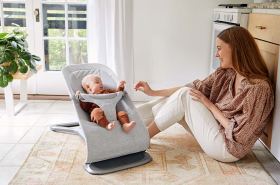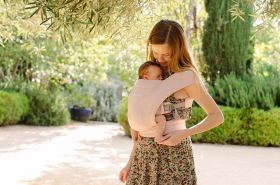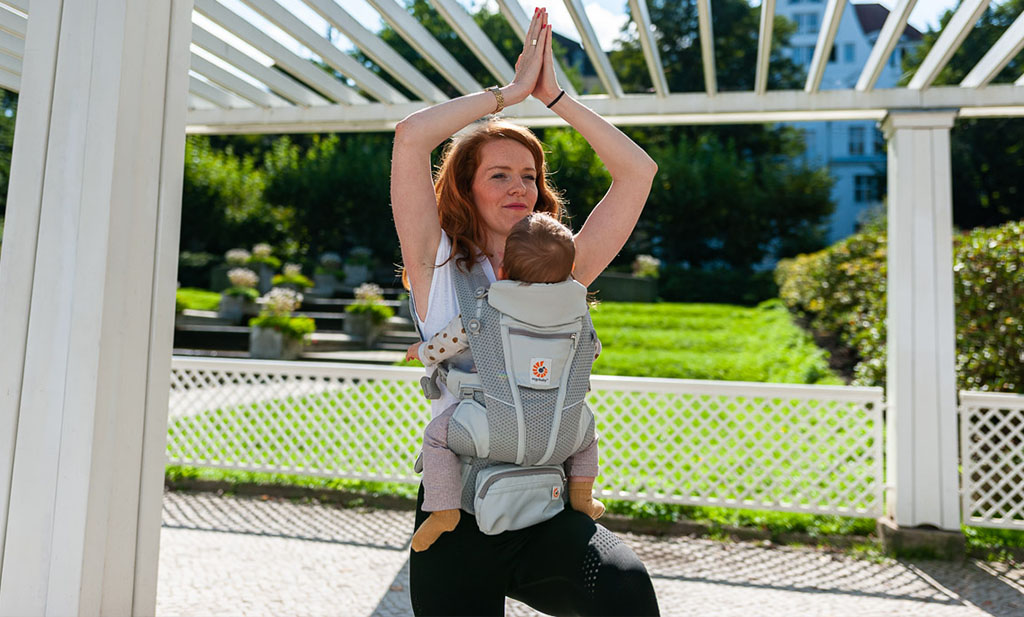
Have you ever wondered why babywearing is so popular? It’s not just about keeping your little miracle close and doing something good for your child. Babywearing is also great postnatal exercise, positively impacting your fitness and well-being. It offers you a wonderful opportunity to build a close bond with your baby while simultaneously doing something for your health.
In today’s blog, we want to take a closer look at how babywearing is a natural full-body workout. You’ll learn how it promotes your cardiovascular health and helps reduce stress. We’ll also explore the emotional benefits that come with carrying your baby. So, grab your baby carrier and let’s explore the amazing advantages of babywearing together.
Babywearing as a Natural Full-Body Workout
Have you ever considered that babywearing isn’t just good for your child, but also for your own fitness? It acts like a natural full-body workout that keeps you fit while you carry your baby close. But what’s behind this? How does babywearing equal postnatal exercise?
Strengthening Back and Leg Muscles
When you carry your baby, your body is constantly at work, balancing the additional weight. This leads to a natural strengthening of your core muscles. You can think of it as a gentle workout that increases in intensity as your baby grows – similar to training with dumbbells. Your back muscles especially benefit from this. When you carry your baby correctly, your child’s body weight is evenly distributed across your upper body. This way, you can prevent back problems.
Improving Posture
Babywearing also promotes healthy posture. To carry your baby’s weight, you should stand upright and pull your shoulders back. This assumes, however, that you’ve properly adjusted the connecting strap in the middle of your shoulder blades and centred the lumbar support of the waist belt on your back. This brings you into an upright position, centres your spine, and strengthens your postural muscles.
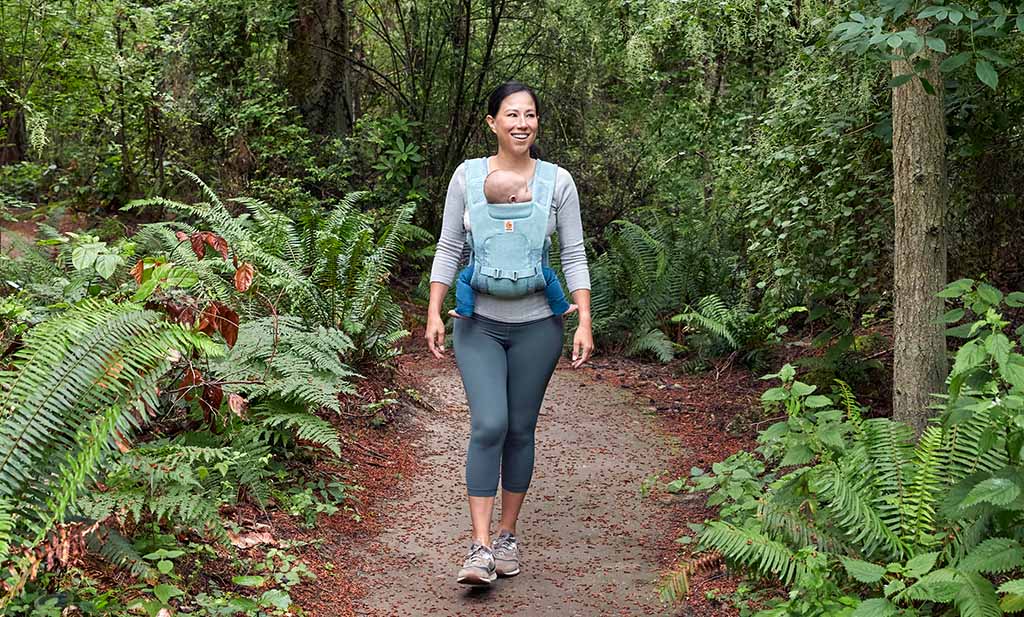
Increased Calorie Burn in Everyday Life
When you move or are active, you naturally burn calories and babywearing increases your daily calorie burn. By carrying your baby for 60 minutes, you can burn around an extra 112 calories (this varies from person to person). This adds up throughout the day. Even everyday activities like housework or walks become effective workouts. A walk with the baby in a carrier burns more calories than one with a pram, especially if you go up and down hills.
In addition to these benefits, babywearing allows you to stay active and manage your daily routine. Whether you’re climbing stairs, marching briskly through town, or hiking on muddy forest paths – with your baby in the carrier, you’re flexible and independent. You can more easily play with older siblings, do housework, or walk the dog with your hands free.
Promoting Cardiovascular Health
Increased Heart Rate During Daily Activities
When you carry your baby, your heart rate rises during everyday tasks. The average resting pulse is about 60 to 80 beats per minute. However, your heart must work harder due to your baby’s extra weight – even during simple activities like climbing stairs or going for a walk. This leads to a gentle but constant strain on your cardiovascular system. And that’s healthy.
Improving Endurance
Regular babywearing can also be seen as a form of endurance training. It’s similar to fast walking or cycling, which are known to train the cardiovascular system. When you move with your baby in a carrier, your body needs more oxygen. This results in aerobic exercise that can be maintained over a longer period, thus improving your stamina.
Lowering the Risk of Cardiovascular Diseases
Carrying your baby regularly can help reduce the risk of heart disease. Studies have shown that just eight minutes of intense exercise daily can lower the risk of cardiovascular diseases by up to 20 percent. Imagine how much you can achieve if you carry your baby several times a day for longer periods as part of your regular postnatal exercise. Incidentally, a healthy and active lifestyle also reduces the risk of cancer by almost a third.
Remember, intensity matters. For the best results, you should work up a sweat while carrying your baby. This boosts your cardiovascular system and activates your muscles to release risk-reducing hormones. After six to eight weeks of regular babywearing, you can expect improved muscle metabolism, increased blood vessel elasticity, and reduced heart muscle stiffness.
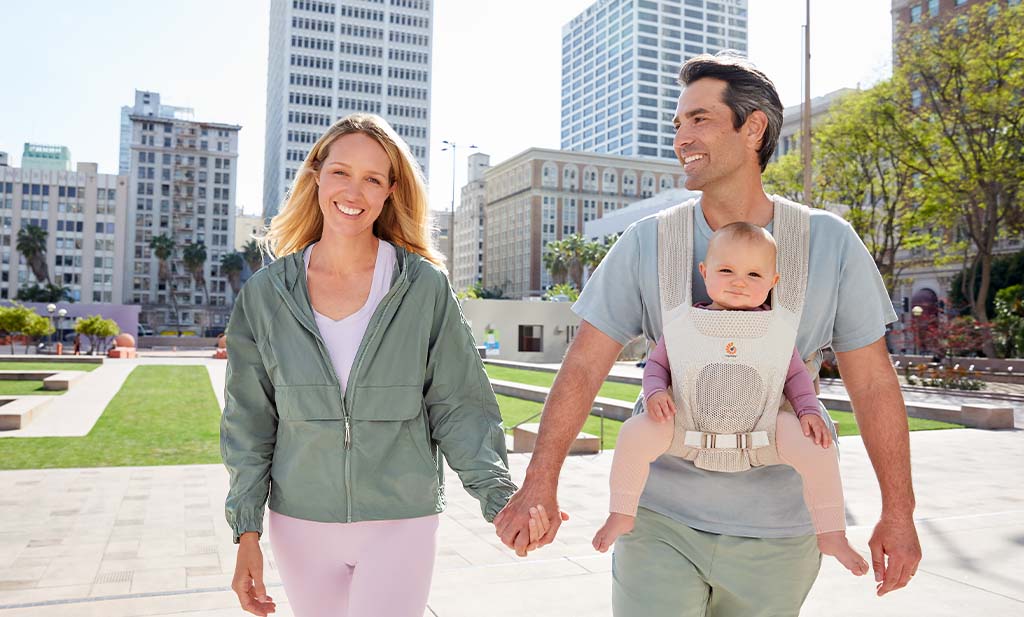
Stress Relief and Emotional Benefits
Happy Hormones Through Physical Contact
When you carry your baby, you experience a special form of closeness. The close physical contact releases oxytocin and prolactin – hormones that are particularly high after birth. These hormones play a crucial role in falling in love with your little wonder and building a unique relationship. They also promote breastfeeding.
Reducing Postpartum Depression
Interestingly, babywearing can also help with postpartum depression. A Canadian study showed that mothers who had several hours of physical contact with their baby daily in the first weeks after birth scored lower on the depression scale. The differences were particularly noticeable in the first week and after a month.
The study also showed that intense physical contact led to a greater decrease in cortisol levels – a stress marker – in the mothers’ saliva. Carrying your baby in a wrap or baby carrier can thus help you reduce stress and improve your emotional well-being.
Strengthening the Parent-Child Bond
Babywearing allows you to build a deep emotional connection with your baby. Eye contact, physical touch, stroking, and cuddling promote bonding – the crucial parent-child attachment. Constant physical contact creates an intense closeness that strengthens mutual trust. You experience your baby up close and can respond to their needs immediately, fostering a secure attachment.
It’s ideal to retreat into privacy with your newborn in the first weeks after birth and enjoy this special bonding phase undisturbed. Carrying in a wrap or a specially-designed newborn carrier can greatly support and accompany this phase.
Remember: A secure attachment is as important for babies as food, sleep, and warmth. By responding sensitively and promptly to your baby’s needs, you enable them to feel safe and secure. Babywearing is a perfect way to nurture this close connection while benefiting from stress-reducing and happiness-promoting effects.
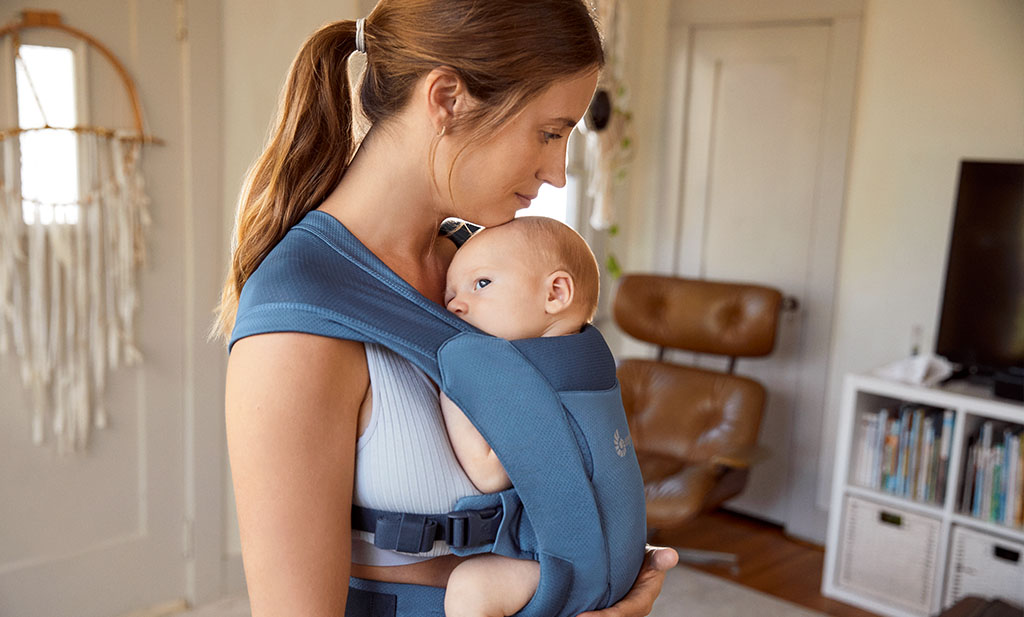
Babywearing as a Postnatal Exercise and Wellness Programme for Body, Mind, and Heart
A natural full-body workout, cardiovascular training, stress-relief – as you can see, babywearing isn’t just healthy for your little one, but is great postnatal exercise for you too, positively impacting your fitness and well-being. Moreover, it strengthens the parent-child bond and promotes the release of happiness hormones.
Babywearing is more than just a practical way to transport your child from A to B. Whether you’re out for a stroll, doing housework, or simply cuddling – carrying your baby brings so many benefits. It’s doubly and triply worthwhile to enjoy this special form of closeness and make use of its diverse positive effects.
A small midwife tip to end with: Since babywearing naturally puts additional, unfamiliar strain on your body, it makes sense to incorporate daily back and postnatal exercises (alongside a postnatal course) into your daily routine. Often, just 15 minutes a day is enough. And importantly: Gradually increase the duration of carrying after birth, and in the early days, rest more and cuddle a lot in bed or on the sofa. As needed. If you need some more ideas on postnatal exercise, click here. Enjoy!
——————————-
Sources:
https://www.bmbf.de/bmbf/shareddocs/kurzmeldungen/de/sport-senkt-herz-kreislauf-risiko.html
Calories burned carrying babies, toddlers (fitrechner.de)
Heart racing during pregnancy: What’s causing it? | Eltern.de.

